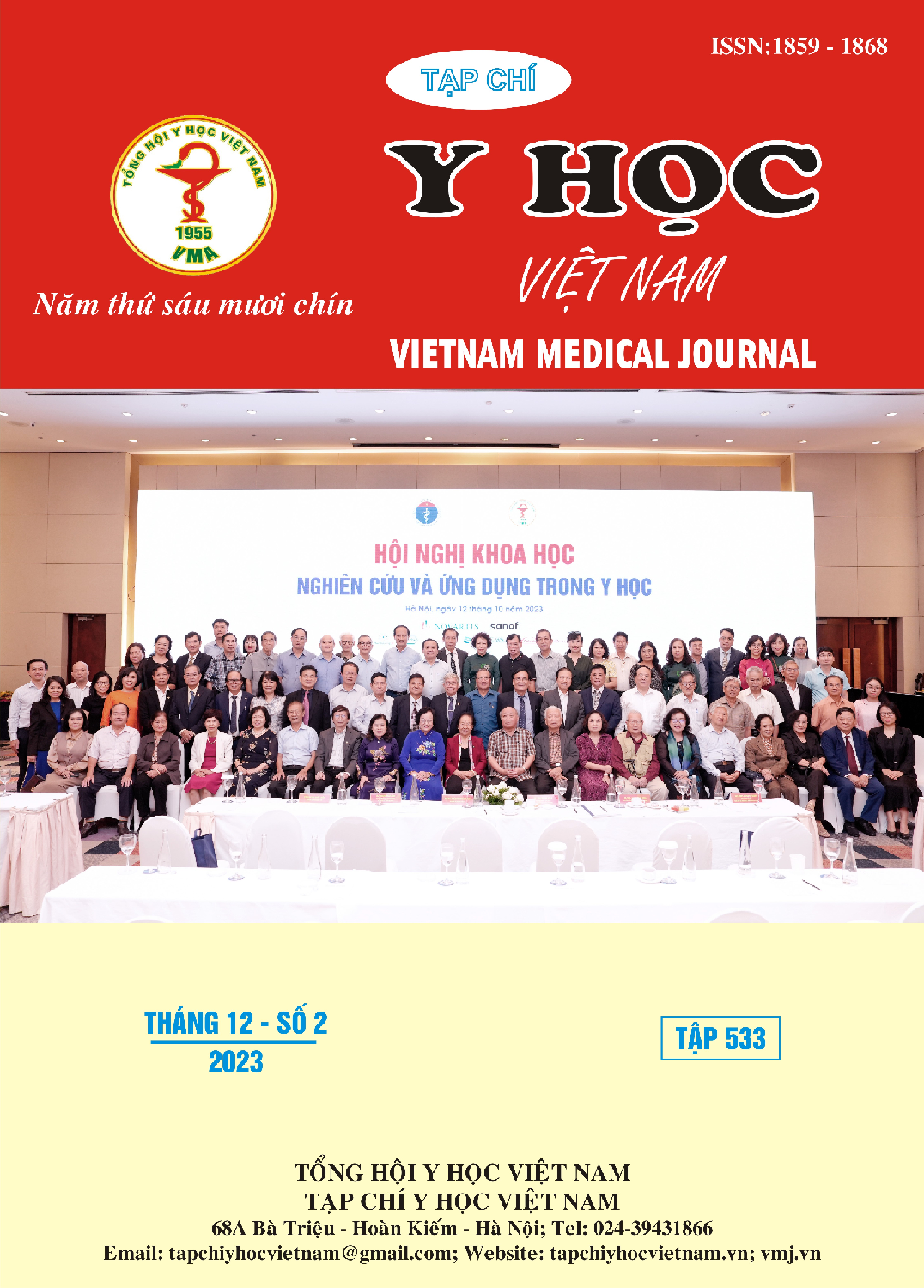CLINICAL FEATURE AND DEMOGRAPHIC RISK FACTORS FOR MICROSPORIDIAL STROMAL KERATITIS
Main Article Content
Abstract
Purpose: To review the clinical finding of patients with Microsporidial stromal keratitis who underwent penetrating keratoplasty to determine which factors at presenting visit that can predict the risk factors and the needs of surgery. Methods: A retrospective descriptive study of all cases, who was diagnosed and underwent therapeutic corneal transplantation between January 2018 and December 2020 at Viet Nam Eye Hospital. Data collected including demographics, clinical finding, management was analyzed. Potential predictors for TPK was obstained and determine which factors at presenting. Results: 63 eyes of 62 patients was analysed. Bilateral involvement was seen in 1 patient (1.6%). 74.6% of patients were female. The mean age was 60.8±10.1 years (range 34-86). The mean duration of symptoms was 10.1± 9.7 months (range 1.3-50.2 months). Risk factors include using long-term topical steroid, a history of ocular trauma. Visual acuity was ≤ CF 3m in 92.0%. Keratic precipitates were present in 47.6%, hypopyon were present in 66.7%. The reason for performing TPK includes medically unresponsive ulcer in 43 eyes (68.3%), perforated ulcer and perpending perforation in 6 eyes (9.6%). Conclusions: The most common risk factors: ocular trauma, prolonged steroid eyedrops. The diagnosis of Microsporidial stromal keratitis can be challenging and usually presents with non-specific corneal infiltration refractory to antimicrobial therapy. Therefore, we should consider Microsporidia in the differential diagnosis of infectious keratitis.
Article Details
References
2. Mai Thị Liên, Phạm Ngọc Đông. Tình Hình Viêm Loét Giác Mạc Nhiễm Trùng Tại Bệnh Viện Mắt Trung Ương 5 Năm 2013-2017. Trường Đại Học Y Hà Nội; 2019.
3. Huang HY, Wu CL, Lin SH, et al. Microsporidial stromal keratitis: characterisation of clinical features, ultrastructural study by electron microscopy and efficacy of different surgical modalities. Br J Ophthalmol.
4. Sabhapandit S, Murthy SI, Garg P, Korwar V, Vemuganti GK, Sharma S. Microsporidial Stromal Keratitis: Clinical Features, Unique Diagnostic Criteria, and Treatment Outcomes in a Large Case Series. 2016;35(12):6.
5. Sharma S, Das S, Joseph J, Vemuganti GK, Murthy S. Microsporidial Keratitis: Need for Increased Awareness. Surv Ophthalmol. 2011; 56(1):1-22.
6. Vemuganti GK, Garg P, Sharma S, Joseph J, Gopinathan U, Singh S. Is Microsporidial keratitis an emerging cause of stromal keratitis? – a case series study. BMC Ophthalmol. 2005; n5(1):19.
7. Garg P. Microsporidia Infection of the Cornea—A Unique and Challenging Disease. Cornea. 2013;32:S33.
8. Das S. Intraocular Invasion by Microsporidial Spores in a Case of Stromal Keratitis. Arch Ophthalmol. 2011;129(4):512.


